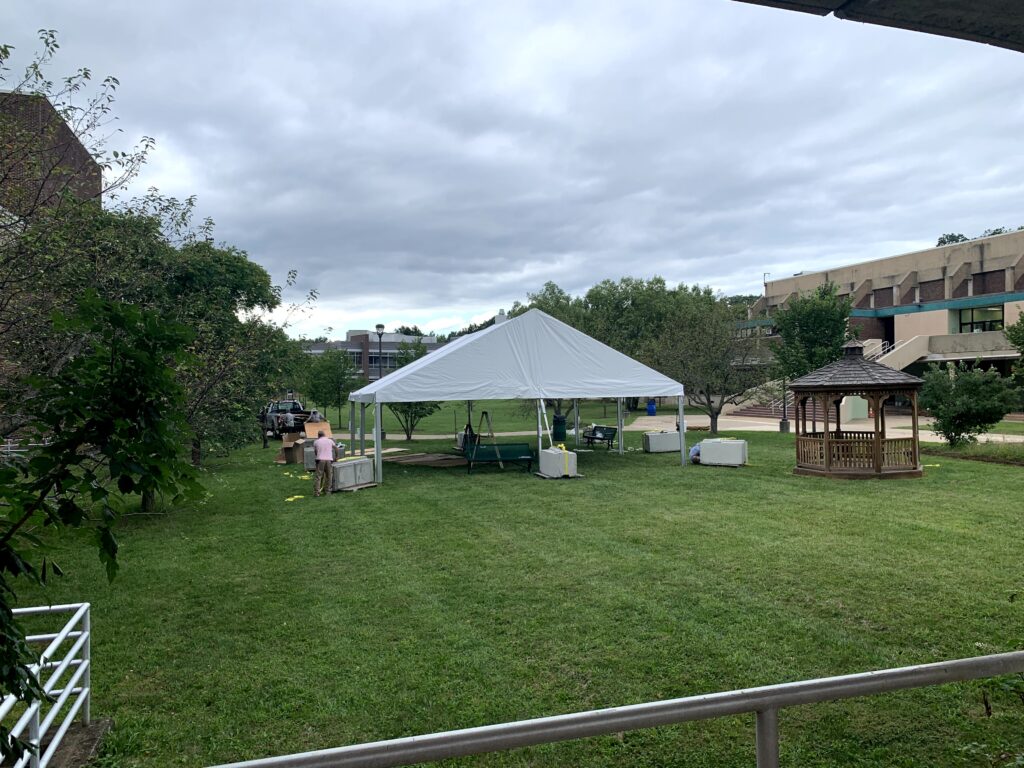Guide to Outdoor Canopy Tents
Choose the Best Outdoor Canopy Tent for You
Outdoor canopy tents provide versatile shelter for a variety of settings, from backyard barbecues to trade shows, camping excursions, and emergency relief operations. They serve as a reliable refuge against the elements, offering shade, wind protection, and a degree of insulation. However, not all canopy tents are created equal. This guide delves into the distinctions between canopies and tents, their weather resilience, and best practices for securing and dismantling them.
What is the Difference Between a Canopy and a Tent?
At first glance, canopies and tents may appear interchangeable, yet they serve distinct purposes and feature unique structural attributes.
A canopy is typically an open-sided shelter supported by a frame, often with a fabric roof that provides protection from sunlight and mild precipitation. Canopies are widely used for outdoor events, farmers’ markets, and recreational gatherings. Their design prioritizes accessibility and airflow, making them ideal for temporary shade rather than full enclosure.
A tent, on the other hand, is a fully enclosed structure with walls and a roof, offering superior insulation and protection against harsh weather conditions. Tents come in various styles, from backpacking tents designed for wilderness expeditions to large event tents suited for weddings and corporate functions.
The primary distinction lies in their intended use: canopies prioritize convenience and shade, while tents emphasize weather resistance and enclosure. Understanding this difference ensures that you select the appropriate shelter for your specific needs.
Are They Weatherproof?
Outdoor canopy tents are designed to withstand certain weather conditions, but their effectiveness varies based on materials, construction, and additional reinforcements. While some canopies offer moderate resistance to wind and rain, they are not inherently weatherproof unless explicitly designed with robust materials and reinforcements.

Cold Weather
Standard canopy tents provide minimal insulation in cold weather, as they lack enclosed walls and airtight seals. However, there are ways to enhance their performance in chilly conditions:
- Sidewalls and Panels – Adding zippered or Velcro-attached sidewalls helps trap warmth and block cold wind gusts.
- Thermal Liners – Insulated liners or layered fabric roofs can mitigate heat loss.
- Heaters and Ground Covers – Propane or electric heaters can be used safely with proper ventilation, and heavy-duty ground tarps help retain heat.
For extreme cold, a fully enclosed tent with a reinforced frame and insulated panels is more suitable than a basic canopy.
Rain and Snow
Canopies can endure light rain but struggle under prolonged exposure or heavy downpours unless specifically rated for waterproof performance. Key factors to consider include:
- Material Coating – Look for canopies made from polyurethane-coated polyester or vinyl, which provide superior water resistance.
- Sealed Seams – Taped or heat-sealed seams prevent water from seeping through stitching holes.
- Roof Pitch – A steeply angled roof allows rain and snow to slide off rather than accumulate, reducing the risk of structural failure.
- Reinforced Frames – Snow buildup can weigh down a canopy, potentially causing collapse. Opt for canopies with reinforced aluminum or steel frames to handle added stress.
For areas with heavy snowfall, a sturdier tent with load-bearing capabilities is the better choice.
How to Weigh Down a Canopy Tent
Stability is paramount when using a canopy outdoors, especially in windy conditions. A lightweight canopy can easily become airborne if not properly secured. Here are several methods to anchor a canopy tent effectively:
- Weight Bags – Sandbags or specialized weight bags can be strapped to each leg, adding necessary ballast.
- Water Weights – Portable water-filled weights offer convenience and can be emptied after use for easy transport.
- Cinder Blocks or Heavy Objects – Placing dense materials at the base of each leg helps anchor the structure.
- Ground Stakes and Ropes – In grassy or dirt areas, using metal stakes and tension ropes improves stability.
- Auger Anchors – Ideal for softer terrain, these corkscrew-style anchors dig into the ground for a firm grip.
A well-secured canopy not only prevents tipping or blowing away but also enhances safety for those underneath it.
How to Take Down a Canopy Tent
Disassembling a canopy tent requires careful handling to avoid damage and ensure longevity. Follow these steps for a smooth takedown process:
- Remove Accessories – Detach any sidewalls, lighting, or decorative elements first.
- Release Weighting Mechanisms – Remove weights, stakes, or anchors carefully to prevent sudden shifts.
- Collapse the Frame – If using a pop-up canopy, slowly retract the legs and fold inward, ensuring the structure folds evenly.
- Detach the Canopy Fabric – Carefully remove the fabric top, shaking off any debris or moisture before folding.
- Fold and Store Properly – Fold the fabric neatly to avoid wrinkles and mildew growth. Store the frame in its carrying case or designated storage space.
Proper storage extends the life of the canopy, preventing premature wear and tear from moisture or improper folding techniques.
Outdoor canopy tents provide an excellent solution for temporary shelter, whether for events, relaxation, or workspaces. However, their effectiveness depends on the conditions they are exposed to and how well they are maintained. By understanding their limitations, reinforcing them against inclement weather, and securing them properly, you can maximize their functionality and longevity. Whether shielding yourself from the summer sun or braving unexpected rain, a well-prepared canopy tent ensures a comfortable and reliable outdoor experience.
Looking for the perfect tent to make your event unforgettable? As a leading event tent manufacturer, Rainier Tent offers high-quality, durable, and customizable tent solutions for weddings, festivals, corporate gatherings, and more. Whether you need a sleek frame tent, a spacious pole tent, or a weather-resistant structure, we’ve got you covered—literally! Contact us today to find the ideal tent for your next event and create an experience your guests will never forget.